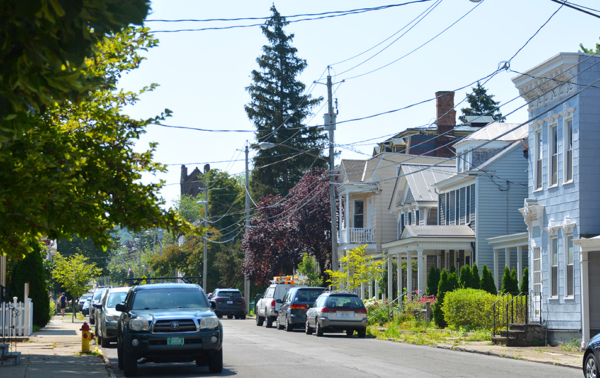The City of Hudson, New York, has about 8,000 residents. It’s about a hundred and twenty miles north of New York City, and about 40 miles south of the State Capitol at Albany.
Long a sleepy backwater, Hudson has been transformed over the past several years and today is a true destination in the Hudson Valley. Renovations are taking place all over town—and most of the best properties have already been renovated. Many agree that one of the biggest attractions of the City of Hudson is its large number of original buildings. In fact, it’s these old properties, renovated, that constitute the most valuable housing stock in town.
And there are lots of them.

How did Hudson end up with so many great properties?
It’s a tale of prosperity and neglect—and then, new prosperity. This would be only a typical tale of renovation, but the key here is the period of neglect, and how that has contributed to the town we know today.
Hudson was founded in the 1780s by Nantucket whaling captains who wanted to avoid attacks from British privateers–so they moved their boats a hundred miles up the Hudson River, where they would prove to be much safer than off the coast of Massachusetts. Whaling, however, was already on the wane by the mid-nineteenth century. There were other attractions that fueled Hudson’s growth throughout the nineteenth and into the early twentieth century.
But it’s safe to say that after 1910, very little was built in Hudson.
And fortunately for folks looking to own a great old house or renovate one, very little was torn down in Hudson after 1910 as well.
Some might think of it as a sort of “suspended animation”; and while the result is that in Hudson we now have what amounts to a time-capsule of American architecture, this interim period is a little more complicated than that.
It’s true that Hudson remained in near-total obscurity for close to a hundred years. During this time it suffered the usual hardships that visited many American towns of similar size–sluggish or nonexistent growth, a poor local economy, and invisibility. As it has turned out, invisibility may have saved much of the architecture. For while many downtowns in America were getting “reimagined” in the age of “urban renewal” during the 1960s and 1970s, Hudson’s was not.

For many years–roughly from 1920 until 1950–Hudson was not much more than a large red-light district. There were quite a number of brothels in Hudson, and plenty of gambling and a lot of bars as well. Today’s Columbia Street was once called Diamond Street. After World War Two, New York State decided to shut down all of the illicit trade in Hudson.
Perhaps predictably, that effort did not solve any of the root problems. Jobs had disappeared. Hudson was largely impoverished. And there was so little economic activity that no one really thought about doing very much at all in the City of Hudson. So the architecture that had survived–some of it nearly two-hundred years old–remained.
During the 1960s, 1970s and 1980s, Hudson was hit hard by trade in illicit drugs, and crime was rampant. And again, no one was paying much attention to the architecture. There was talk at one point of bulldozing what was then a totally derelict Warren Street–but like much else that was discussed in that era, it never happened.
Perhaps because it had always had an Amtrak station, Hudson by the 1990s had begun to see some renewal, mainly on Warren Street. There were a handful of antique stores and a couple of restaurants. It took until the mid-2000s before the rest of the town really started to see extensive renovations–the better blocks of Union Street and Allen Street especially.
Today, building permits are seen all over town. There is almost no new construction–instead, old houses are being rescued, reimagined and renovated by the score. These houses are all survivors. They were built when the City itself was young and prosperous; they survived the end of whaling, the industrial revolution, the ravages of the twentieth century, and most importantly, the wreckers’ ball.
It’s probably safe to say they are here today because for a hundred years, nothing was built or torn down in nearly the entire city. They remain because for a long time they were invisible to outside world. No longer!
Interested in buying or selling a property in Hudson, NY?

